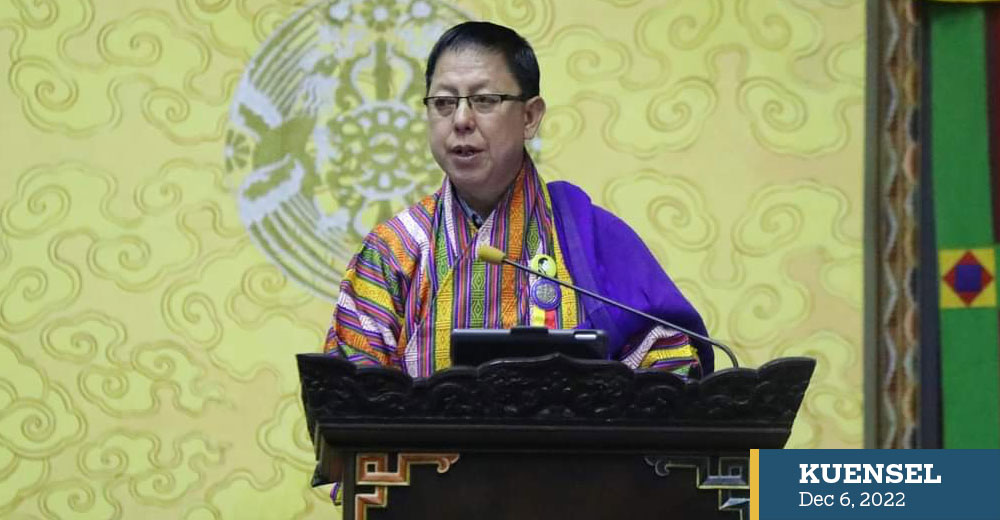To ease congestion and make travel public friendly
Thukten Zangpo
The Thimphu bus terminal at Lungtenzampa should be relocated with adequate urban transport infrastructure. The Public Accounts Committee (PAC) recommended this yesterday although relocating the bus terminal had been planned for years.
At the joint sitting of the Parliament yesterday, PAC’s Chairperson and Paro MP, Ugyen Tshering said that relocating the terminal will ease traffic congestion and make travel more public-friendly.
The recommendations follow findings of the Royal Audit Authority (RAA) report on Safe and Sustainable Road Transport System 2022. The Committee recommended that the government should implement a bus rapid transit system, improve bus and taxi stops infrastructure and information boards to be made available for travelers at the bus terminal or stops.
Ugyen Tshering said that the committee found out that the people choose private vehicles because of the lack of proper infrastructure like bus stops, bus bays, access to bus stops and bus shelters.
“Encouraging people to use public transport will reduce pollution and other traffic problems. If better public transport facilities are made available, it will discourage use of individual vehicles,” he said.
Ugyen Tshering said that there was no information related to the timing and destination along with the route map available for the travelers at the bus stops.
The RAA report found that although bus and taxi stops were installed, it lacked proper space leading to traffic congestion along urban roads posing safety risks to passengers and other road users.
There are more than 60 buses in the capital today that cater to more than 138,736 people.
However, according to a study conducted by the information and communications ministry for the drafting of National Transport Policy, there should be at least 60 buses for every 100,000 population. At present, it is short of about 23 buses.
The National Statistics Bureau projects Bhutan’s population to reach more than 884,000 by the end of 2047. Half of the population is expected to reside in urban areas.
“If the current infrastructure is not improved, it would be even more challenging to manage the traffic with the increasing number of vehicles in the country,” the report added.
The audit report also stated that there are unclear legal and institutional framework in terms of surface transport and weaknesses in monitoring and poor oversight responsibilities.
The RAA had asked the information and communications ministry to come up with a comprehensive surface transport policy because there was no policy.
RAA had also asked the department of road and Road Safety and Transport Authority (RSTA) to adopt a coordinated approach among relevant authorities in planning, designing, construction and operation of roads to ensure minimum safety standards.
The RAA also recommended making urban transport efficient to address traffic congestion and vehicular pollution.
Meanwhile, the number of vehicles in the country is growing at an annual rate of 8 to 9 percent with the number of light vehicles tripling since 2005. According to RSTA, there are 125,052 vehicles in the country as of October 2022. The highest is in Thimphu with 68,435 and the lowest is in Mongar with 2,973.
Records with the Royal Bhutan Police (Traffic division) show that there had been 19,235 motor vehicle accident cases reported with 1,678 deaths and 9,792 injured cases from 2000 to mid 2021.
The deliberation will continue today.


